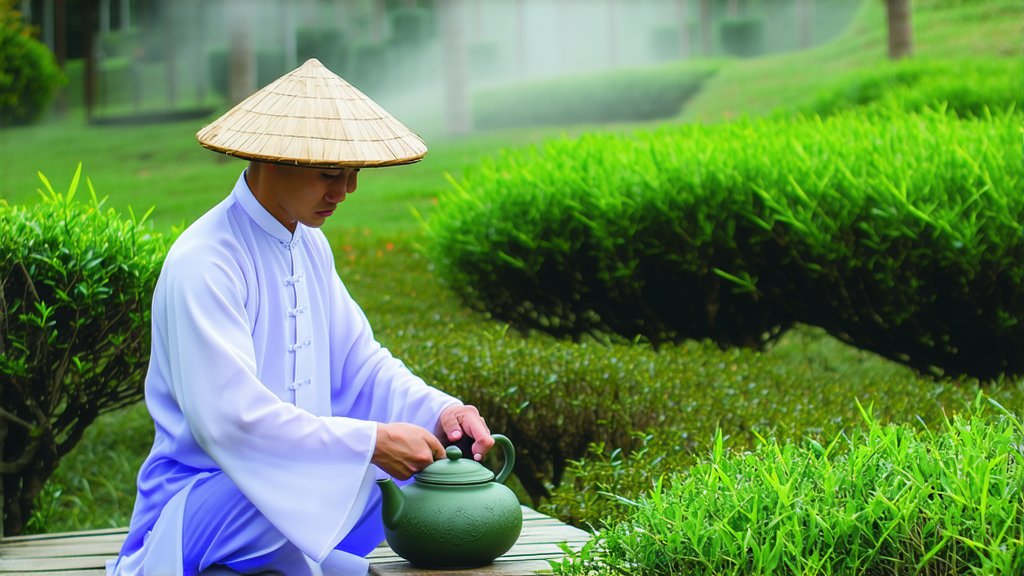
In the vast and diverse landscape of Chinese tea culture, few varieties capture the essence of tradition, craftsmanship, and flavor as exquisitely as Keemun Black Tea. Originating from the picturesque mountains of Anhui Province in eastern China, this revered beverage has not only stood the test of time but has also earned its place among the world's most cherished teas. As we embark on a journey to explore the depths of Keemun Black Tea, we delve into its rich history, unique varieties, intricate production process, and the art of its appreciation.
A Glimpse into History
The story of Keemun Black Tea traces back to the early 19th century when a man named Hui Chun, a member of the Qi family from the village of Shexian (formerly known as Keemun), stumbled upon a new method of tea processing. This serendipitous discovery led to the creation of what is now celebrated as one of China's finest black teas. The name 'Keemun' itself is derived from the transliteration of 'Qimen,' the county where this tea was first crafted. Over time, Keemun Black Tea gained international acclaim, particularly during the mid-19th century when it became a favorite in British royal courts, earning it the moniker "Keemun" or "Qimen" in Western circles.
Varieties and Characteristics
Keemun Black Tea is renowned for its distinctive appearance, characterized by slender, twisted leaves adorned with golden tips. These golden flecks are a testament to the high-quality young shoots used in its production. There are two primary types of Keemun Black Tea: Keemun Mao Feng and Keemun Hao Ya. Keemun Mao Feng, often referred to as "Grade One Keemun," boasts a more refined flavor profile with subtle floral notes and a smooth, velvety texture. On the other hand, Keemun Hao Ya, or "Grade Two Keemun," offers a bolder, more robust taste with a hint of maltiness and a lingering sweetness. Both varieties share a common trait—their ability to evoke a sense of tranquility and sophistication in every sip.
The Craft of Production
The magic of Keemun Black Tea lies in its meticulous production process, which involves several stages that demand both precision and artistry. It all begins with the careful selection of tea leaves, typically harvested in the spring and early summer when they are at their freshest and most nutrient-rich. The freshly picked leaves undergo withering, where they are spread out thinly to lose moisture and become soft and pliable.
Next comes the rolling stage, where skilled artisans meticulously roll the leaves between their palms or use traditional wooden rollers, shaping them into tight spirals. This not only helps in extracting flavors but also contributes to the tea's characteristic appearance. After rolling, the leaves are left to ferment under controlled humidity and temperature conditions, allowing enzymes within the leaf to interact with oxygen, transforming the green leaves into a dark, rich hue and developing complex flavors.
Once fermentation reaches the desired level, the tea undergoes a final firing process to halt oxidation and lock in its aroma and taste. This step involves gently roasting the leaves over charcoal fires or using modern electric ovens, imparting a subtle smokiness that complements the natural sweetness of Keemun Black Tea. The finished product is then sorted and graded based on leaf size, quality, and the presence of golden tips before being packaged for distribution.
The Art of Appreciation
To truly appreciate Keemun Black Tea, one must engage in the ritualistic practice of tea tasting, known as "pincha" in Mandarin. This involves not just drinking the tea but immersing oneself in the entire sensory experience. Begin by selecting a quiet, comfortable space free from distractions. Use a transparent glass teapot or a Gaiwan (a traditional Chinese Yixing clay teapot) to observe the unfurling leaves as they dance gracefully in hot water.
For an authentic experience, measure approximately 3 grams of Keemun Black Tea per 200ml of water. Heat the water to around 90-95°C (194-203°F) to preserve the delicate flavors without scalding the leaves. Pour the hot water over the tea leaves and let it steep for about 2-3 minutes for the first infusion, allowing the full spectrum of flavors to unfold. Subsequent infusions can be made by adding hot water directly to the remaining leaves, gradually increasing steeping times to extract different layers of complexity.
As you savor each sip, pay attention to the tea's color, which should be a deep amber or copper hue, indicating proper oxidation. Inhale deeply to appreciate the aroma, which may range from floral and fruity to earthy and woody notes. When tasting, allow the tea to coat your palate fully before swallowing, taking note of any sweetness, honey-like flavors, creamy mouthfeel, and the lingering aftertaste that signifies a well-crafted Keemun Black Tea.
Conclusion
Keemun Black Tea stands as a testament to China's profound tea heritage, embodying centuries of tradition, innovation, and an unwavering commitment to quality. From its humble beginnings in the misty mountains of Anhui Province to its global recognition today, Keemun continues to enchant tea enthusiasts worldwide with its unique character and exceptional taste. Whether enjoyed alone as a moment of personal reflection or shared among friends as a symbol of hospitality, this exquisite red brew invites us all to slow down, savor life's simple pleasures, and connect with a legacy that transcends borders and time.